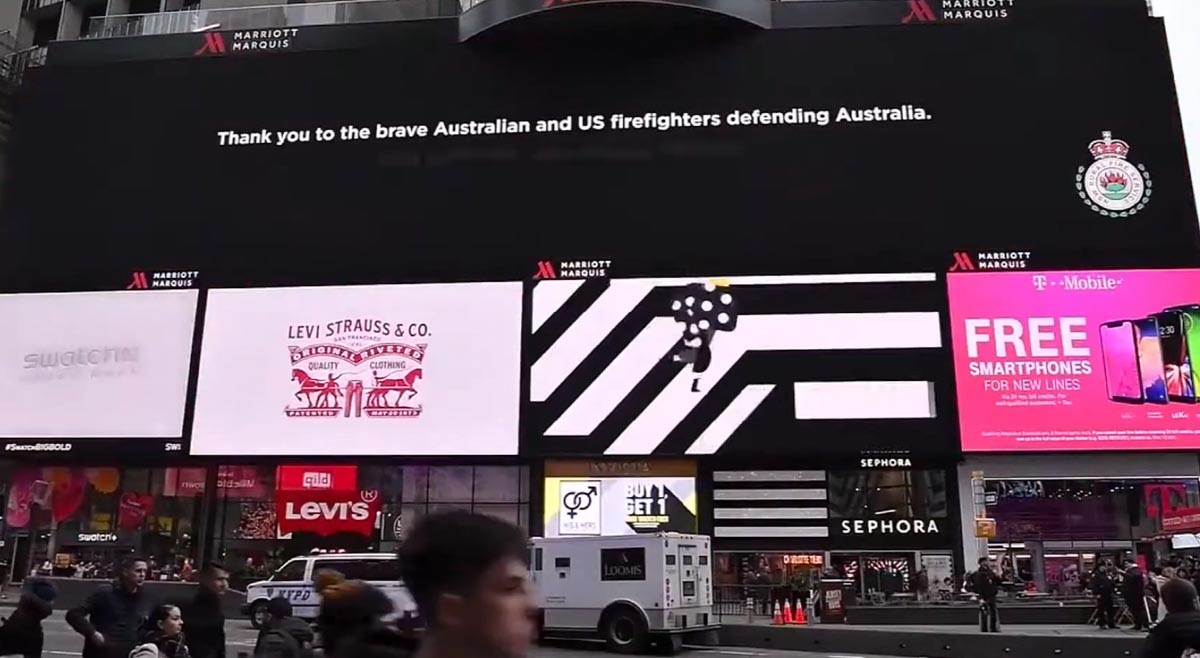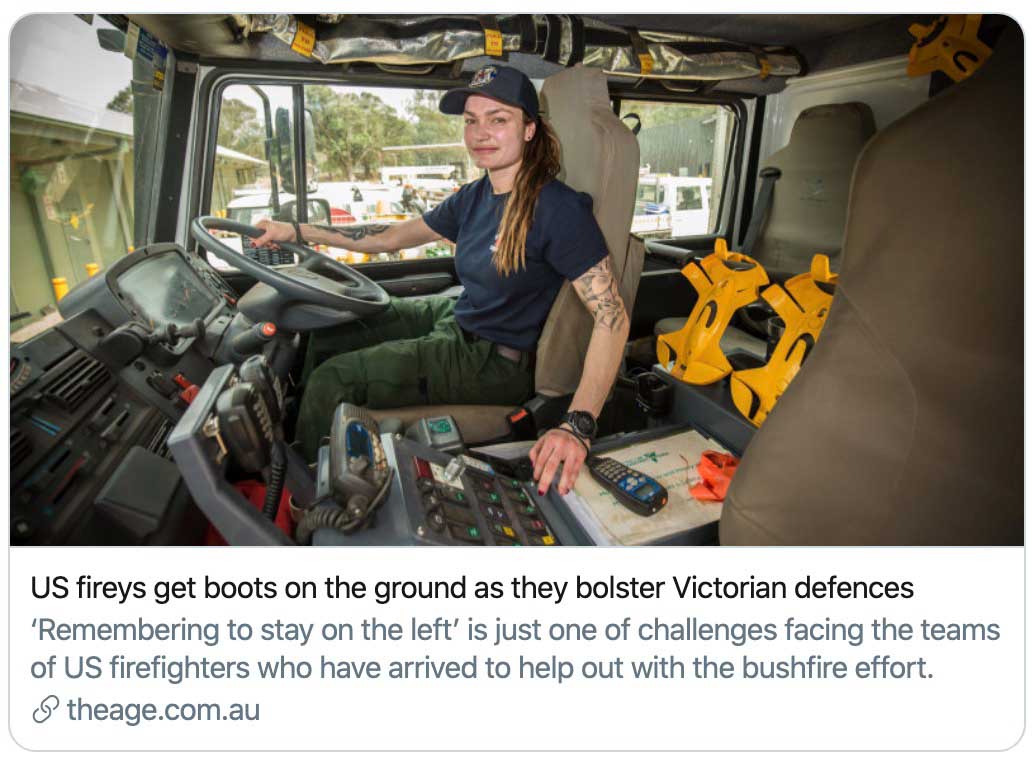A large electronic billboard in New York’s Times Square featured a video message this week thanking the firefighters from the United States and Australia that worked on the bushfires in Australia.
Tag: Australia
Some firefighters return from Australia while others are deploying
Angeles National Forest crew returns after 30 days
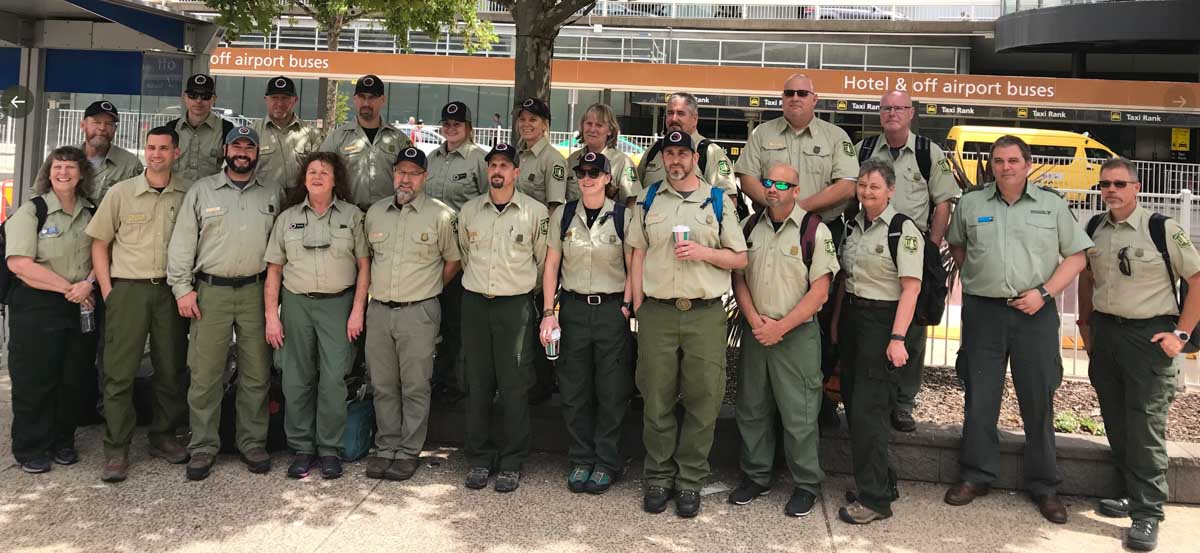
Three more Incident Management Teams from the United States and Canada have deployed to Victoria, Australia. These teams will continue to support local crews in East Gippsland, positioned in the regional Incident Control Centres and out on the fire ground.
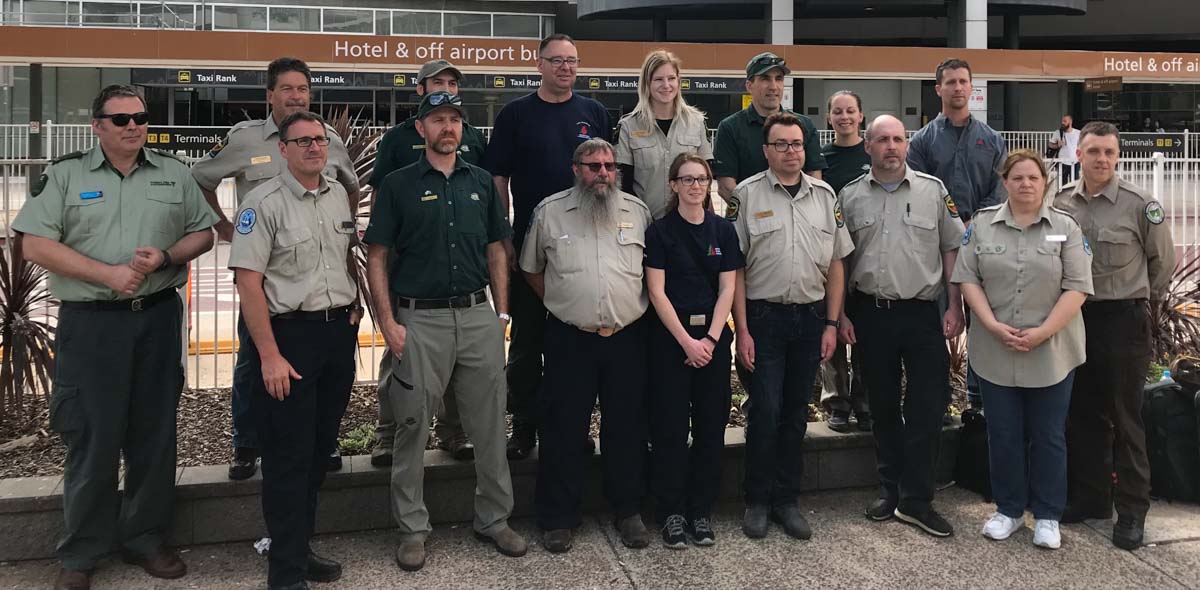
The 20-person hand crew that left January 7 from the Angeles National Forest (ANF) in Southern California to assist with the bushfires in Australia returned 30 days later on February 5.
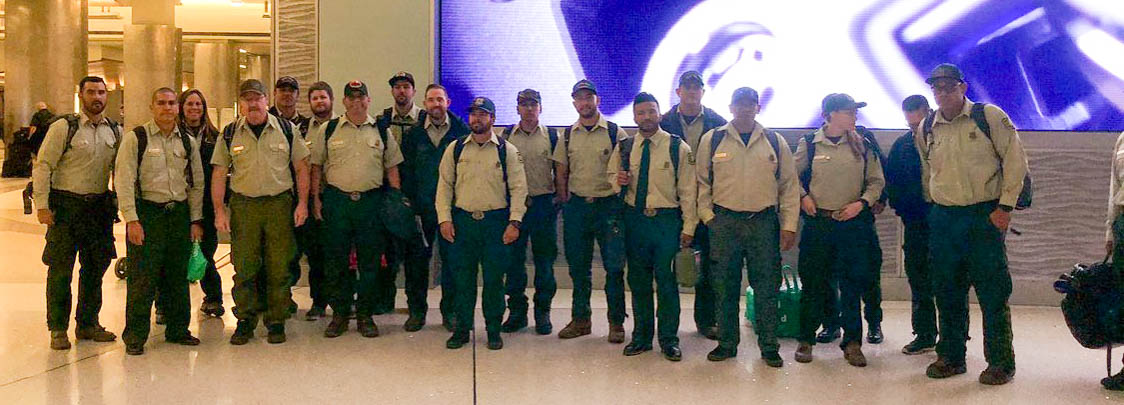
I admit, I am old-school about some issues related to firefighting. I could not help but notice a striking difference between the first photos of U.S. personnel en route down under, compared to the more recent groups. The early photos from December of the personnel from scattered locations around the Western U.S. looked like they could have been on their day off on the way to McDonalds. But beginning in January the photos began to show what was obviously professionals on the way to an important assignment. As they walked, wearing their uniforms, through the airport in Australia other travelers in the airport spontaneously applauded. Very different from the early groups wearing sneakers, jeans, and a wide variety of t-shirts in assorted colors.
I mentioned to Robert Garcia, the Fire Chief for the ANF, the difference in the appearance of the various groups of firefighters when they were traveling. He said:
We honestly believe that how we show up is a key part of professionalism and as such, their duty. Despite many changes, we are trying our best to hold to the professional core values of duty, respect, and integrity.
We insisted that they all depart and arrive in the FS uniform and although they are represented by all 5 ANF IHC crews, ANF Engine crews, prevention, and aviation, they all wore the USFS, Angeles NF Nomex and T-shirt.
Here is a link to more information about the crews from the U.S. working in Australia. The article includes a couple of videos.
Below are photos of the ANF firefighters in more casual attire as they were working in Victoria, but still wearing the ANF t-shirts.
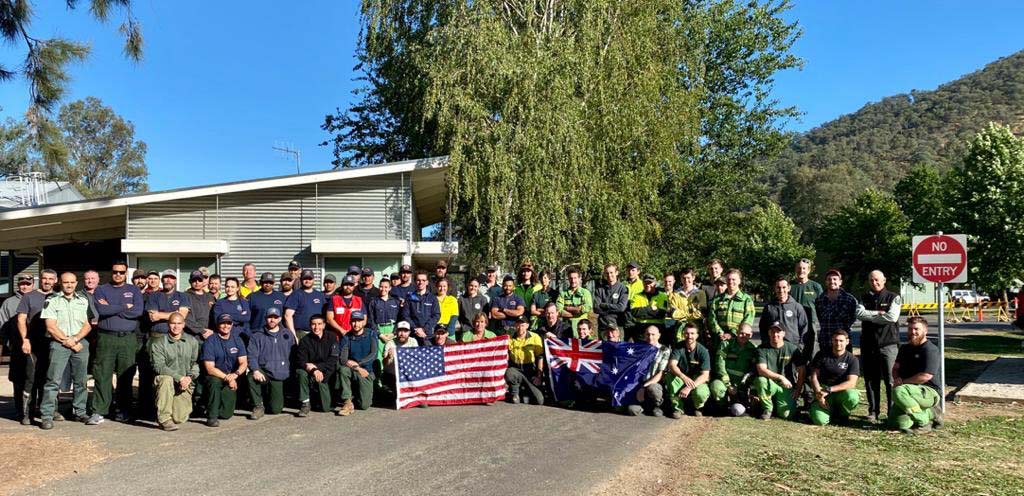
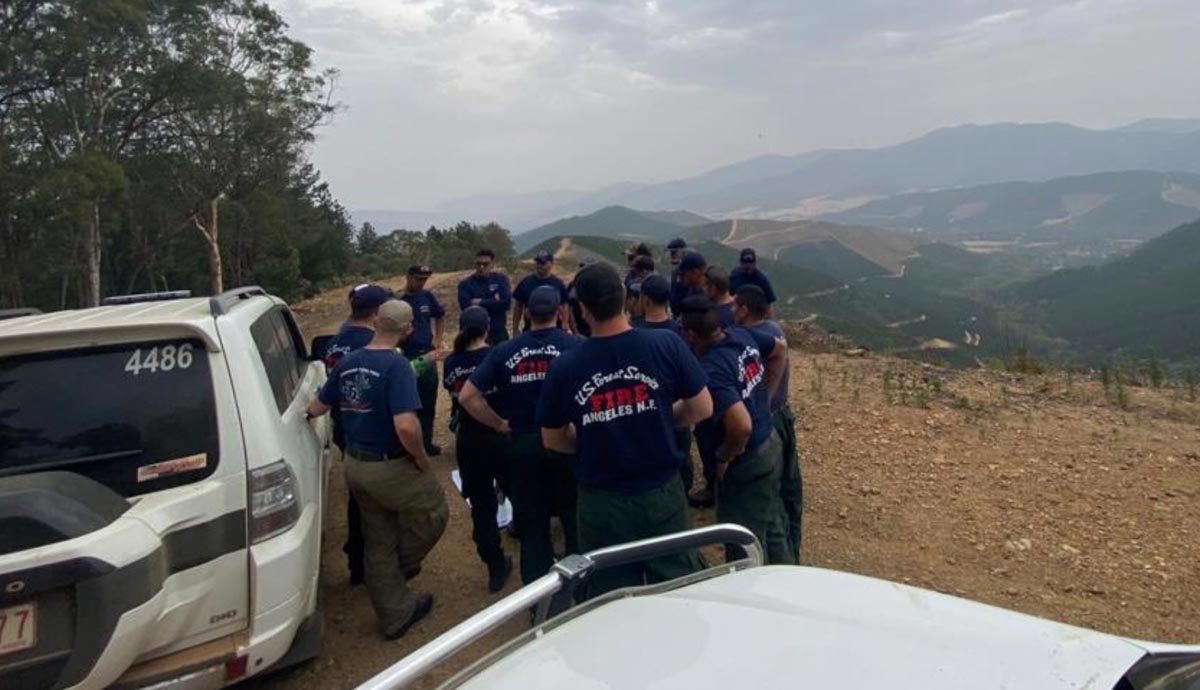
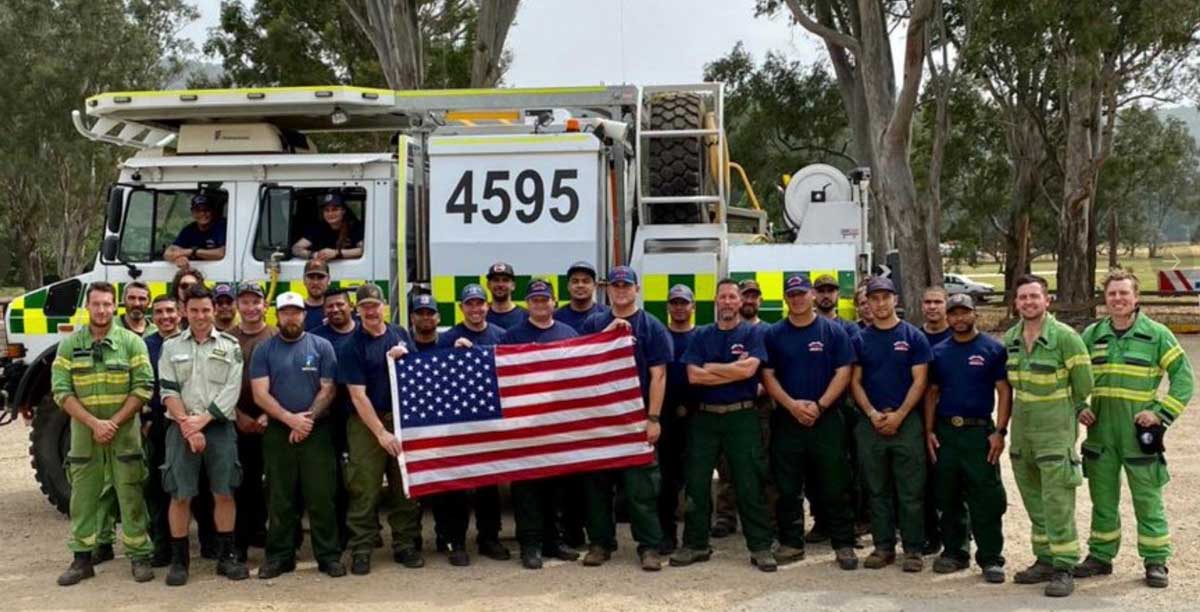
Saving a Very Large tree
Huge tree in the Eucalyptus genus

Chris Hardman, Chief Fire Officer for Forest Fire Management Victoria, distributed these photos of firefighters working to save a very large tree in Australia. Here is what he wrote:
FFMVic Firefighters Henry Lohr and his team mates protected this really important community asset, an ancient Messmate near Bendoc. I hope the work they have done clearing around the base and pumping 600ltrs of foam into the root area saves this tree.
Messmate is a common name for a group of species of tree in the plant genus Eucalyptus.
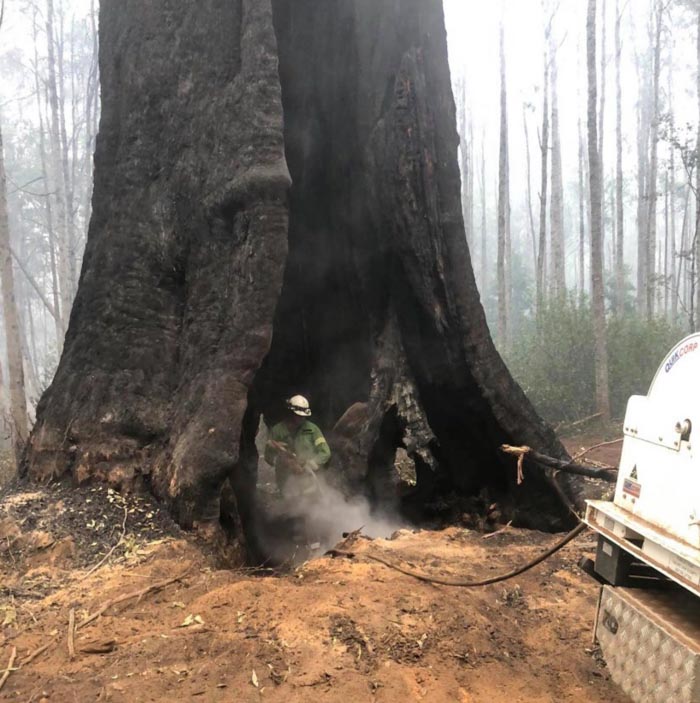
This was earlier this week, our crews creating stronger control lines south of the Pheasant Creek fire near Benambra. Great info Mik #VicFires pic.twitter.com/H6CpxjWLuc
— Chris Hardman (@FFMVic_Chief) February 7, 2020
Rain stops some of the bushfires in Australia
A number of locations have received 100 mm (almost four inches) of precipitation

Many areas in New South Wales, Victoria, and Queensland have received multiple inches of rain over the last seven days with a number of locations recording about 100 mm (almost four inches).
A heavy rain could come close to putting out some fires but a light rain, depending on the fuel (vegetation), might just pause the spread for a while. And some regions have received little or no rain.
NSW Rural Fire Service commissioner Shane Fitzsimmons says the rain is “breaking the back” of the bushfire season. “The rain is good for business and farms as well as being really good for quenching some of these fires we’ve been dealing with for many, many months,” the commissioner told ABC TV on Friday.
The forecast for Sydney, on the NSW coast, calls for nearly 100 percent chance of precipitation every day over the next eight days.

Australian military establishes kitchen unit at bushfire
They are also using heavy equipment to help contain bushfires
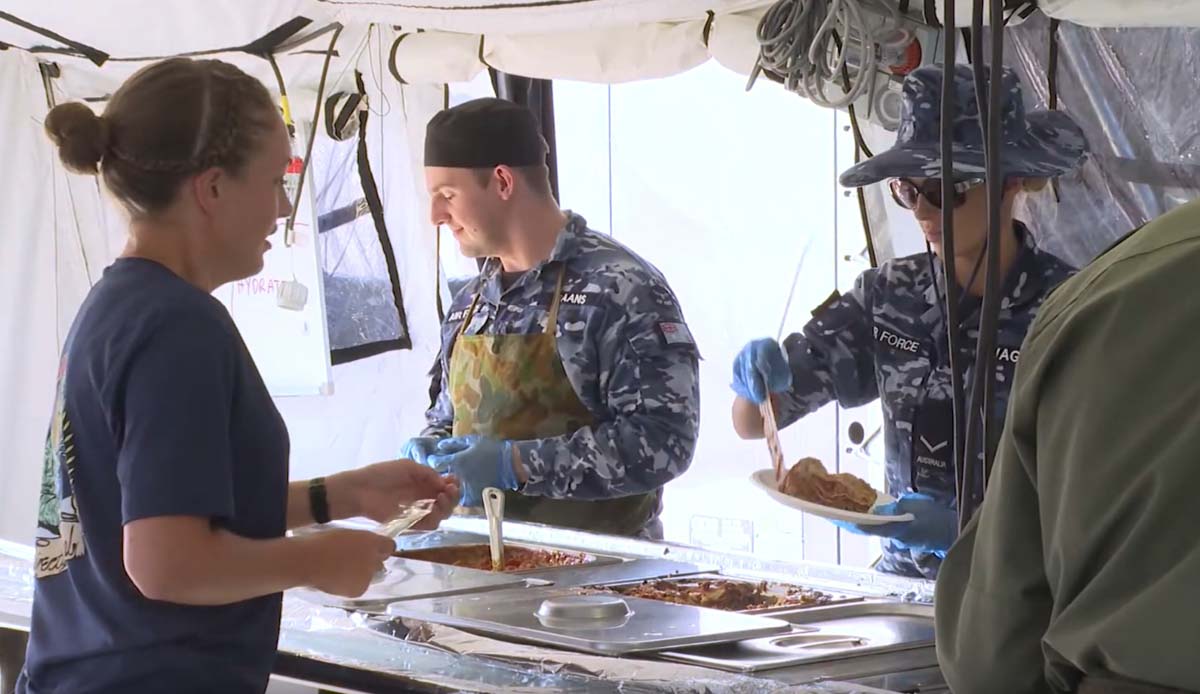
The Australian Defence Force (ADF) has established at least one mobile kitchen to feed personnel involved in providing assistance at bushfires.
Here is the official description of the video, which is below:
“The Australian Defence Force (ADF) is continuing support to State and Territory agencies and local communities under Operation Bushfire Assist 19-20. Three Joint Task Forces have been established to facilitate ADF support to emergency services in Victoria, New South Wales and South Australia. The ADF is working alongside government and civilian agencies at all levels in support of the firefighting, relief and recovery effort by providing humanitarian, transport and other assistance such as aviation, route clearance, logistics, veterinary assistance, health services, engineering support, and accommodation.”
They are also using heavy equipment to help contain bushfires.
#YourADF has established fire breaks near South Canberra in accordance with @ACT_ESA’s intent to prepare & defend against the Orroral Valley Fire. In NSW, 24km of tracks have been cleared within Bago State Forest & road clearance continues around Colo Heights. #OpBushfireAssist pic.twitter.com/Z7PsgXV8ST
— Defence Australia (@DeptDefence) February 5, 2020
Australia’s Prime Minister wants to establish bushfire Royal Commission
Some Australian firefighters are urging the PM not to call for a Royal Commission

Scott Morrison, the Prime Minister of Australia, wants to establish a Royal Commission to evaluate the country’s response to the unprecedented number of bushfires that have plagued the eastern part of the continent since September.
In a statement issued in mid-January the United Firefighters Union of Australia said there have already been numerous bushfire-related inquiries over the past two decades. One more commission would likely come up with the same issues, they said.
The union believes there should be instead, an audit all of the existing recommendations that haven’t been implemented. They said Royal Commissions are expensive, can take hundreds of days, force witnesses to relive the trauma, and the commission has no binding power to implement recommendations.
Below is an excerpt from The Australian published January 28, 2020:
In a speech to the National Press Club on Wednesday that would otherwise have been expected to outline the government’s agenda for the year, Mr Morrison will focus on the government’s longer-term response to the devastating bushfire season and the future national emergency response plan.
The speech will not include new announcements on climate change policy but will pitch his message to middle Australia by focusing on practical measures.
It will recognize climate change and broader environmental issues as threats to people’s livelihoods.
Natural disaster response and climate resilience will now feature as key planks of the Coalition’s broader approach to national and economic security.
While responses to natural disasters are already an issue for cabinet’s national security committee, Mr Morrison is expected to say they will now have greater emphasis.
He will say that findings from previous inquiries into natural disasters have been “forgotten and prioritized over time”.
“One of the first tasks of a royal commission will be to audit the implementation of previous recommendations, drawing on work that has already been done in this area,” Mr Morrison will say. “As the years pass, the bush grows back and fuel loads increase, people move in still larger numbers to live in fire-prone areas and dangerous fires occur again in a cycle which must be broken.
“We must continue to learn from this fire season so we are better prepared for the next one, whether that be the deployment of the ADF, local hazard reduction, access to resources such as aerial firefighting equipment, consistency of disaster recovery arrangements or resilience in the face of a changing climate.”
The Australian Broadcasting Corporation (ABC) reported that residents of NSW Sara Haslinger and Michelle Wright both said if the commission is created one of the issues to be looked at is why Prime Minister Scott Morrison failed to meet with the fire chiefs who were warning months ago that the firefighting resources available were not adequate to deal with the bushfire season that was developing. Paul Preston of Victoria said he would like to see the military activated sooner next time.

